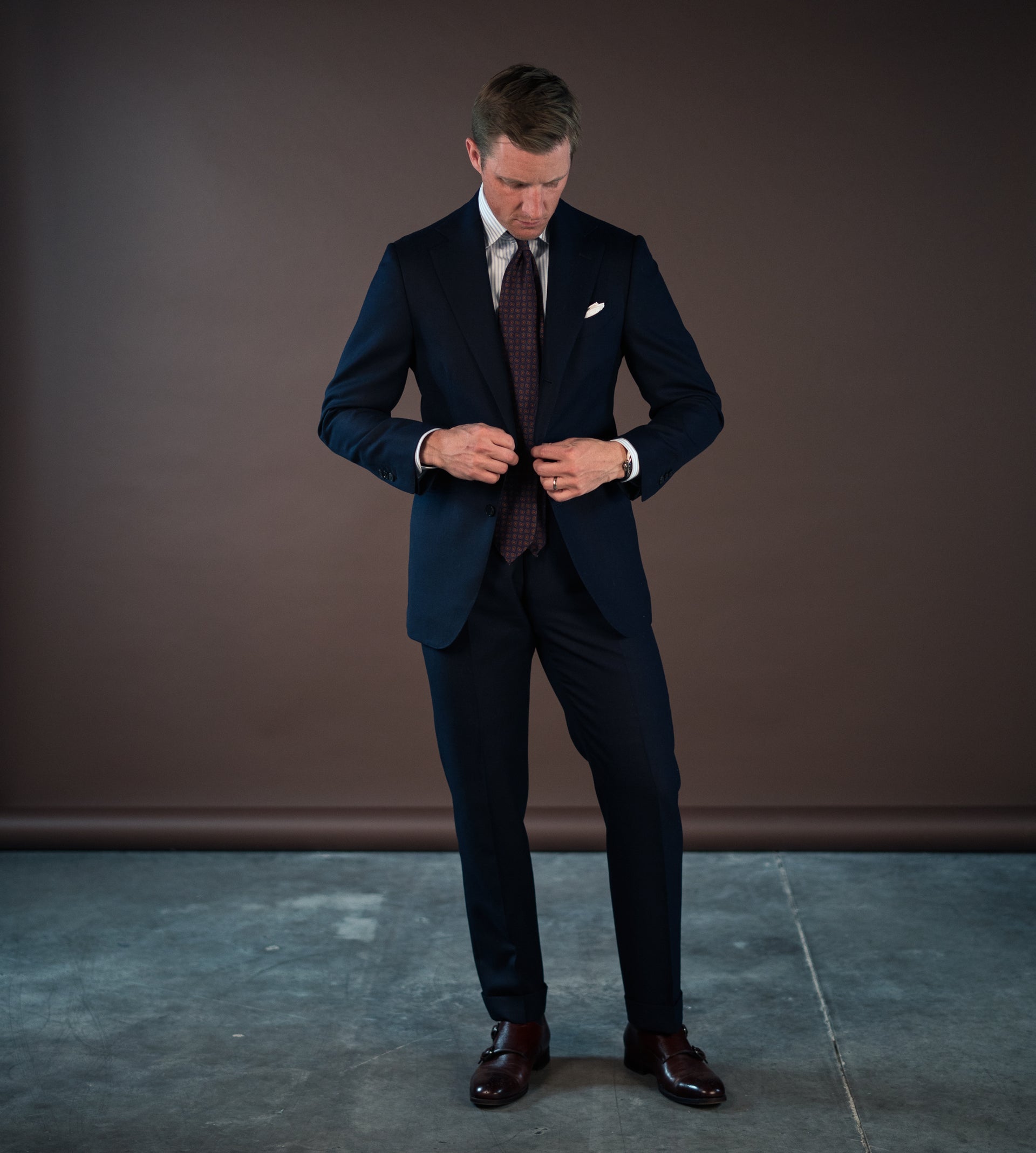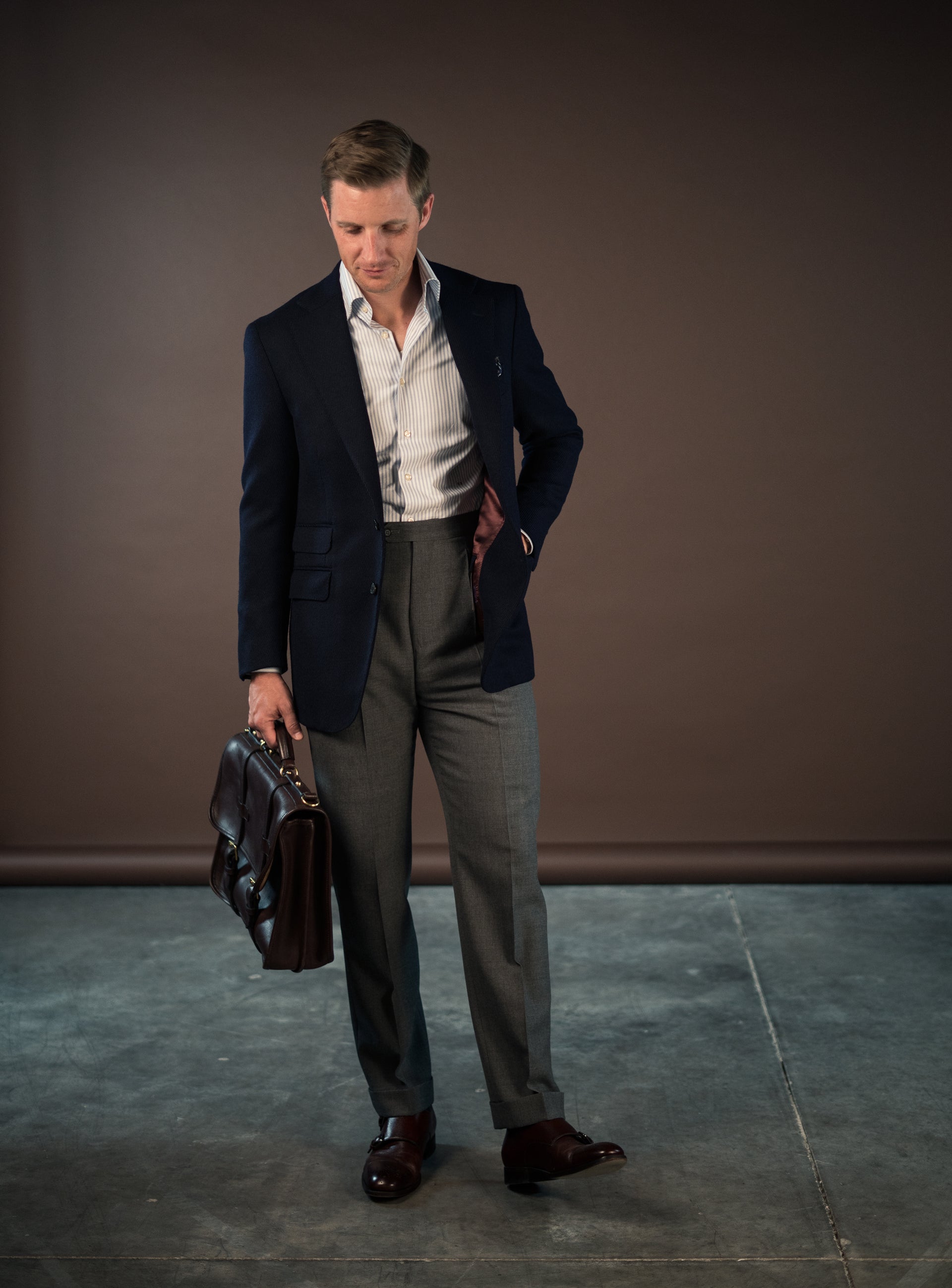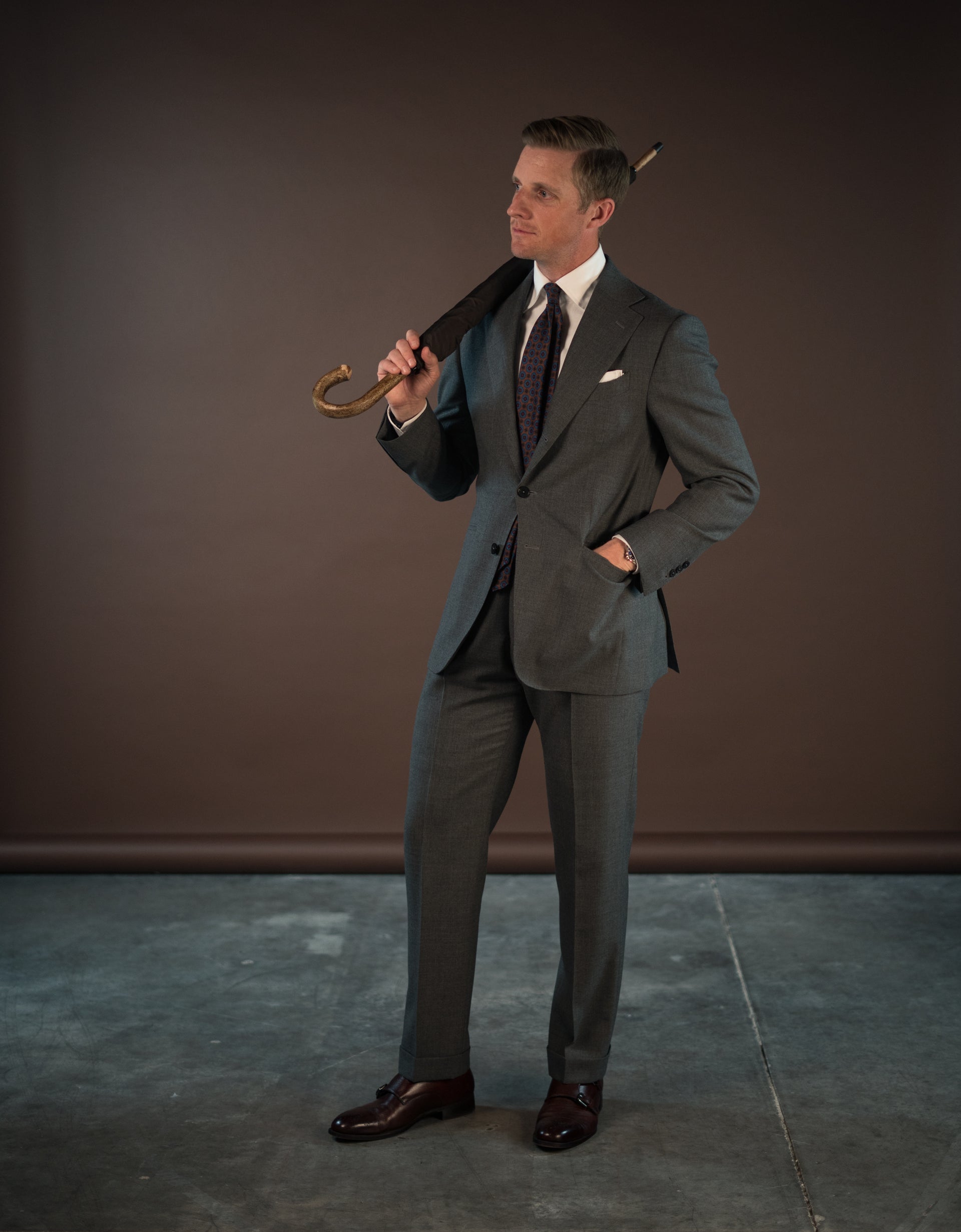1.
Book your appointment
Book your appointment on our online calendars by selecting the shop nearest you.
SALT LAKE CITY
SAN FRANCISCO
SEATTLE
Once your appointment is booked, our team will contact you so we can prepare for your visit. We'll ask about your sizing, preferences, and any specific cloth interests you may have. We'll also advise you on how to dress for your fitting. You will receive a reminder before your appointment.
2.
Your Made-to-Measure fitting
Your appointment begins with a conversation about your vision for the custom garment you’d like to create. From there, we’ll guide you through selecting fabric from our trusted mills, including Loro Piana, Vitale Barberis Canonico, Holland & Sherry, Fox Brothers, and others.
Next, we conduct a detailed made-to-measure fitting using measuring tape, jacket, trouser, and vest templates to develop your personalized pattern. Our robust fitting process goes beyond basic measurements—factoring in posture, shoulder slope, sleeve pitch, and other key elements that affect fit and comfort.
Finally, we’ll walk through your design customizations. You’ll choose details such as lapels, pockets, cuffs, buttons, linings, and canvas structure—whether full-canvas, half-canvas, or unstructured—as well as options for lining and shoulder construction. These design choices shape how your garment looks, feels, and performs.
Throughout the process, your Style Consultant will offer expert guidance to ensure the final result reflects your personal style and preferences.
3.
Your Suit is Built from Scratch
Once your order is confirmed, our team immediately begins coordinating your custom commission. We source and ship all required materials to our expert tailors in Europe, who then draft your pattern and begin the precise process of cutting and sewing your suit, shirt, or topcoat.
Throughout production, you’ll receive weekly email updates so you can follow each stage of craftsmanship. Your one-of-a-kind garment is typically completed and ready for delivery within 4 to 6 weeks.
4.
Final Fitting





